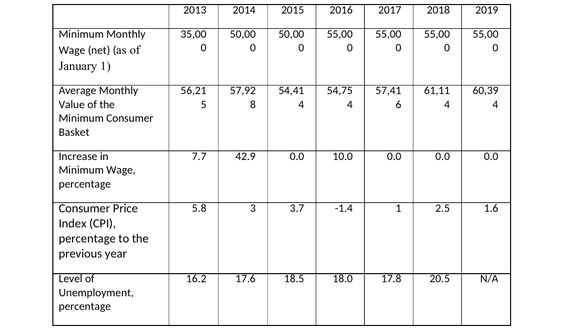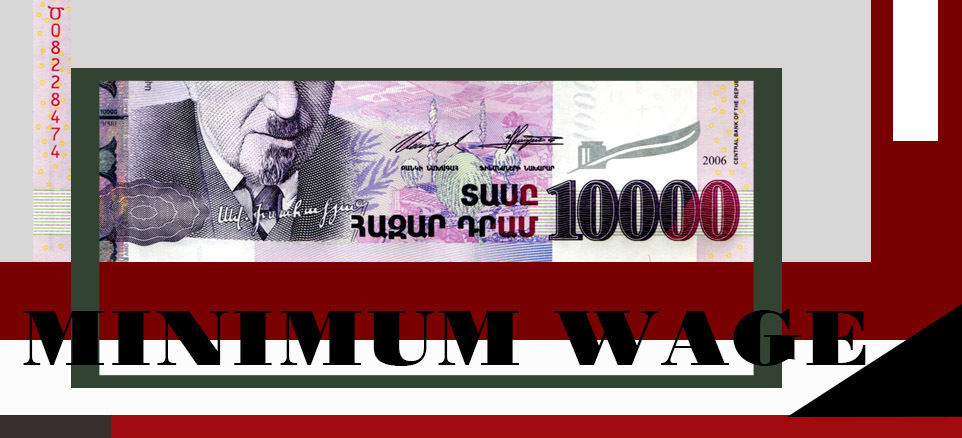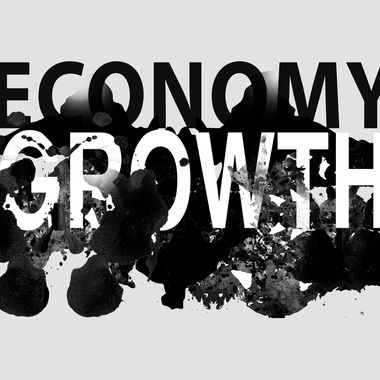Changes to the Law on the Minimum Monthly Wage were accepted by a unanimous 104-0 vote in Parliament on November 19. Starting January 1, 2020, the minimum monthly wage in Armenia will be set at 68,000 AMD, a 23.6% increase from the current 55,000 AMD, which has been in place since 2015. What role does the minimum wage play in the economy and what do changes in the minimum wage result in?
The first country to enact a mandatory minimum wage was New Zealand in 1894. However, the theory behind the policy had already started developing much earlier in the works of several economists. In the 18th century, Adam Smith had stated that a wage should not only be enough for the survival of one individual, but for keeping and maintaining a whole family. This thought was further developed by David Ricardo, who proposed the natural price of labor which he associated with costs of everyday expenses for the amount of food and life essentials necessary for a working individual. According to Ricardo, the market price for labor derives from the interaction between supply and demand. Only in exceptional cases can the market price be lower than the natural price which, in turn, leads to a rise in poverty.
Today’s principles for minimum wage are set out in the International Labor Organization’s (ILO) Minimum Wage Fixing Machinery Convention, passed in 1970. Article 2 of the Convention states “Minimum wages shall have the force of law.” Article 3 establishes the principles and factors that determine the level of the minimum wage. Minimum wages have to take into consideration the needs of workers and their families, taking into account the general level of wages in the country, the cost of living, social security benefits and other factors. Several principles for establishing a minimum wage can be identified by summarizing the results of major research:
-
An increase to the minimum wage has to match labor productivity and price growth rates;
-
A minimum wage can be used as a tool for regulating labor remuneration in different economic spheres;
-
The minimum wage has to grow in tandem with the average wage within an economy.
Changes to the minimum wage can have an immediate effect on income polarization, poverty, prices and employment. Factors that can greatly affect the results of a minimum wage increase include competition levels in the labor market, the proportion of the workforce receiving the minimum wage, the elasticity of labor demand, etc.
Unemployment and Inflation
A minimum wage increase can have two negative results: unemployment and inflation. When the cost of the labor force increases, employers are faced with a dilemma: decrease the number of workers or transfer the cost burden to the consumer by raising product prices. However, in open economies, in a globalized world, opportunities to raise prices are limited. A price increase in the products from one country may simply lead consumers to switch to foreign competitors that are not subject to the same cost pressures, resulting in layoffs. In the case of market monopolies with a lack of substitute goods, inflation prevails. Both inflation and unemployment reduce the population’s general standard of living, which can lead to more poverty. Hence, increasing the minimum wage requires a systemic approach in order to avoid negative consequences.
What is the optimal amount for a minimum wage? By its very nature, the minimum wage has to be enough to ensure the minimum standards of living for one adult and those financially dependent on them. However, this logic only works in developed countries. It’s quite the opposite in developing countries (including the post-Soviet sphere). Moreover, in several developed countries, the minimum wage is, on average, double the minimum consumer basket. Specifically in European countries, the minimum wage is equal to 40-45 percent of the median wage or even more, or 40 percent of the average monthly salary in the country. In some European countries the level of minimum wage is at least 1.5 times more than the subsistence minimum (e.g. the Slovak Republic, the Czech Republic, Estonia, etc.) According to the European Social Charter (7th Edition) “wages must guarantee a decent standard of living to all workers. The net minimum wage must amount to at least 60% of the net national average wage”
From January-September, 2019, the average gross monthly wage in Armenia was 178,633 AMD (or 115,5 AMD net average monthly wage). If the government wants to adopt EU norms, the minimum wage should amount to 60 percent of the net average monthly wage, or 69,300 AMD. However, the minimum wage, based on its economic and social structure, has to be at least 1.5 times more than the country’s minimum threshold of living standards. Moreover, it has to be periodically revised based on the increase in consumer basket prices.
In Table 1 below, it is evident that the minimum wage in Armenia is not adequate to meet the minimum consumer basket.
Table 1. The Minimum Wage and Related Statistics, 2013-2019

Source: armstat.am
Based on the bill approved by the Armenian Parliament, starting from January 2020, the minimum monthly wage will be set at a net value of 68,000 AMD, which is about 60 percent of the net average monthly wage set for 2019. On the one hand, this corresponds to the European norm. On the other hand, it contradicts another principle: it is almost equal to the amount of the minimum monthly consumer basket. This means that a working individual can ensure only his or her own minimum standard of living. Let’s observe a household of three as an example. Two of its members are working individuals receiving the minimum wage and one is a dependent minor. Hence, we can calculate that the income per household member is 45,333 AMD. For the adults to ensure the minimum consumer basket for their child, the minimum wage has to be at least 1.5 times the consumer basket. This means, as of September 2019, the minimum wage should have been 90,591 AMD.
Empirical research has shown that increasing the minimum wage does not significantly affect levels of unemployment, except in cases where growth rates have been especially high. This is based on research done for developed and developing countries, such as the United States, United Kingdom, Brazil, Chile, China, Indonesia, India, Mexico, Russia, Turkey, etc. When the minimum wage increased rapidly, it mainly led to a decrease in formal employment and an increase in informal employment. Several studies done in Europe have also shown that this has led to inflation, a revision of production costs by companies by cutting certain expenses, and an increase in productivity.
The best example of avoiding an increase in unemployment as a result of an increase in minimum wage is Indonesia, where companies and trade unions worked together to maintain jobs. Increases in minimum wage have also had positive results in Latin America. As a tool for regulating post-crisis processes, it has led to an increase in demand and investment. European countries have had a more complex approach to this issue. When raising the minimum wage, they also simultaneously provided subsidies to producers in order to mitigate negative consequences. In general, social dialogue has also shown to prove fruitful in avoiding negative consequences.
also read
Economic Revolution or Hopes for a Miracle
By Paruyr Abrahamyan
Can Armenia’s new government deliver on its promise of an economic revolution following the Velvet Revolution of last spring? Paruyr Abrahamyan decodes the promise of that revolution.
Has Armenia’s Growth Outlook Improved?
By Samson Avetian
Samson Avetian looks at a number of variables that can impact Armenia’s economic growth outlook and writes that despite the challenges, the Velvet Revolution has catalyzed and facilitated meaningful improvement and thus raised longer run GDP growth projections.
Breaking Down Pashinyan’s 2050 Economic Targets
By Samson Avetian
In August 2019, Prime Minister Nikol Pashinyan set ambitious targets to be achieved by 2050, including a population of 5 million, 1.5 million new jobs, eliminating poverty, and a GDP 15 times greater than today’s figures. Samson Avetyan focuses specifically on the GDP growth target and examines the likelihood of hitting such a goal by 2050.
by the same author
Income Tax: Flat or Progressive?
By Ani Avetisyan
Economist Ani Avetisyan looks at the recent decision by Armenia’s government to switch to a flat income tax system and argues that cutting tax rates is not an efficient tool for decreasing shadow economy if a country is institutionally underdeveloped.
Comments
Gevorg Sahakyan
12/20/2019, 6:15:21 PMThanks for the insights. In this context it is also worth mentioning that many employees (mostly in marzes) are contracted part-time 0.50 or 0.25 FTE, which enables employers to circumvent the law on the minimum monthly wage.









We are pleased to open up a comments section. We look forward to hearing from you and wish to remind you to please follow our community guidelines:
EVN Report welcomes comments that contribute to a healthy discussion and spur an informed debate. All comments will be moderated, thereby any post that includes hate speech, profanity or personal attacks will not be published.